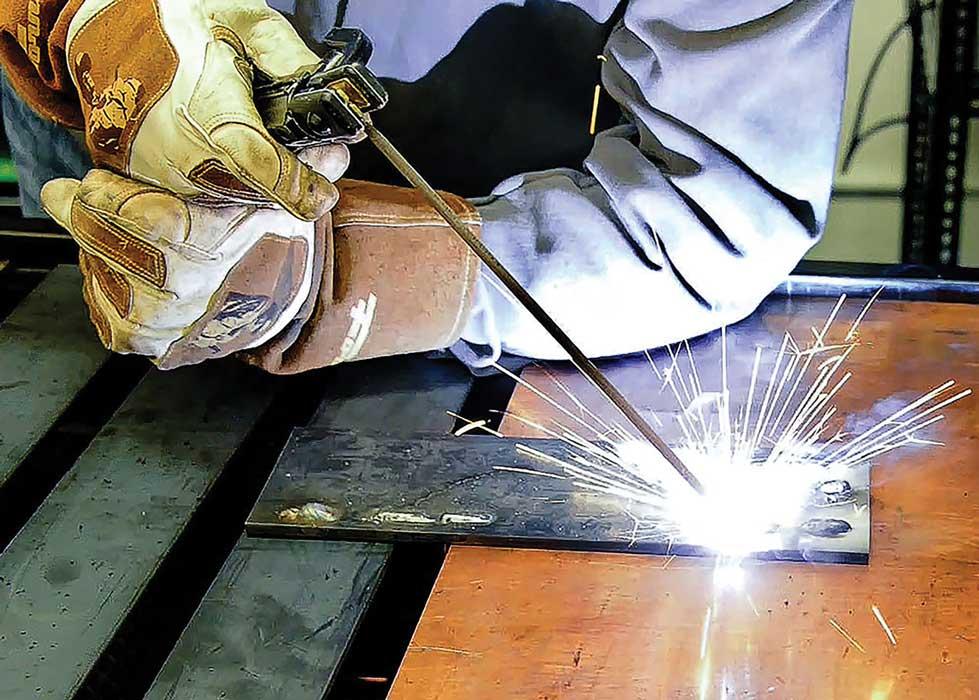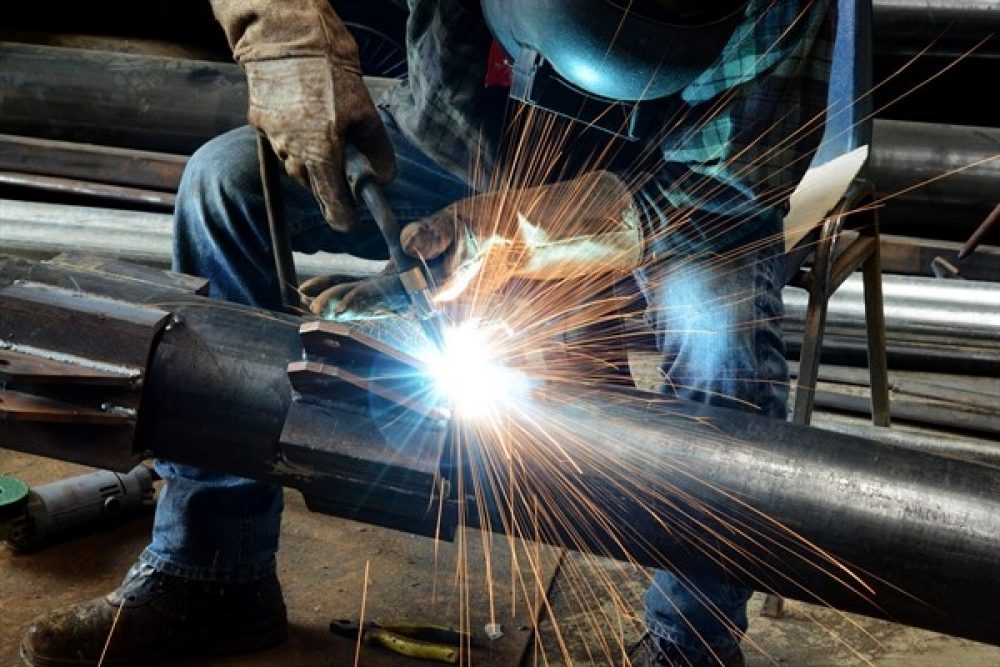Breaking down cracking in welds and how Montana Mobile Welding and Repair Belgrade Welding prevents it
Everything about Welding: Trick Insights Into Techniques and Ideal Practices for Success
Welding encompasses a range of methods, each suited for particular products and applications. Understanding these approaches, such as GMAW, SMAW, and TIG, is important for achieving suitable outcomes. The appropriate tools and safety and security techniques can not be forgotten. As preparation and fixing play critical roles in the welding procedure, understanding these components can substantially improve the top quality of the final product. What are the vital elements that ensure a successful weld?
Recognizing Various Welding Strategies
Welding methods incorporate a selection of methods, each matched to particular applications and materials. Amongst one of the most common techniques are Gas Steel Arc Welding (GMAW), Secured Metal Arc Welding (SMAW), and Tungsten Inert Gas Welding (TIG) GMAW, also called MIG welding, is popular for its rate and flexibility, making it excellent for slim materials. SMAW, or stick welding, is preferred for its simpleness and performance in exterior settings, specifically with thicker steels. TIG welding provides precision and control, making it ideal for elaborate job and non-ferrous steels (Montana Mobile Welding and Repair Welding). Each technique has its distinct benefits and factors to consider, permitting welders to choose the most effective method based upon the project's demands, material type, and desired outcomes. Understanding these techniques is essential for successful welding
Essential Welding Equipment and Devices
While different welding methods require specific skills, the right equipment and tools are just as important for achieving high quality outcomes. Essential welding devices includes welding machines, which differ depending on the strategy-- such as MIG, TIG, or stick welding. Protective equipment, including headgears, aprons, and handwear covers, warranties safety and security and comfort throughout the procedure. Additionally, clamps and components assist secure materials in location, ensuring accuracy in welds. Consumables like welding rods, cord, and protecting gas are also essential elements that influence the high quality of the weld. Furthermore, tools such as grinders and cutters promote surface area prep work and post-weld ending up, adding to a specialist result. Investing in top quality equipment inevitably boosts the performance and efficiency of welding jobs.
Safety Practices in Welding
Appropriate safety techniques are essential in the welding industry to secure workers from potential dangers. Welders must wear ideal personal protective tools (PPE), consisting of safety helmets with proper shading, gloves, and flame-resistant clothing. Adequate air flow is vital to lower direct exposure to hazardous fumes and gases produced during the welding process. Additionally, workers ought to be educated in the appropriate handling of welding tools to stop mishaps. Fire precaution, such as maintaining combustible products far from the welding area and having fire extinguishers easily available, are required. Normal examinations of tools and work areas can help identify prospective hazards before they result in crashes. By adhering to these safety and security practices, welders can develop a more secure working environment and decrease risks connected with their profession.
Preparing Materials for Welding
Preparing products for welding is an important action that considerably influences the high quality and honesty of the last item (Belgrade). Proper preparation entails cleaning up the surfaces to get rid of pollutants such as rust, dust, and oil, which can endanger the weld. Methods such as grinding, fining sand, or utilizing solvents are typically used to achieve a clean surface. Additionally, guaranteeing that the materials mesh snugly is necessary; voids can result in weak welds. It's likewise essential to take into consideration the alignment and positioning of the parts, as this will certainly affect the ease of welding and the last outcome. Choosing the ideal filler product and making sure compatibility with the base steels is vital for achieving strong, resilient welds.
Tips for Achieving High-Quality Welds
Achieving top notch welds requires interest to detail and adherence to finest practices throughout the welding process. Appropriate joint prep work is crucial, ensuring surfaces are clean and complimentary from impurities. Picking the proper filler material and welding technique based upon the base metals is important for ideal bonding. Keeping consistent traveling speed and angle while welding can promote and avoid problems uniformity. In addition, managing warmth input is essential; extreme warmth can cause warping and damaged joints. If essential, on a regular basis evaluating the welds throughout the process enables for immediate adjustments. Lastly, employing appropriate post-weld therapies, such as cleaning and anxiety alleviation, can boost the sturdiness and stability of the weld, inevitably making certain a successful result.
Troubleshooting Common Welding Issues
Welding commonly presents obstacles that can impact the high quality and stability of the end product. Usual concerns such as porosity, inconsistent weld beads, and getting too hot can emerge, each calling for particular repairing strategies. Understanding these problems is crucial for welders to improve their abilities and attain perfect outcomes.
Porosity Problems Discussed
Porosity can frequently be overlooked, it remains a vital concern in welding that can endanger the stability of a completed item. Porosity refers to the existence of small gas pockets within the weld grain, which can lead and weaken the joint to welding stainless steel to mild steel early failing. This issue commonly emerges from impurities, dampness, or inappropriate protecting gas protection during the welding procedure. To minimize porosity, welders should validate that the base products are completely dry and clean, utilize suitable protecting gases, and maintain regular welding specifications. Frequently examining the equipment and environment can also help determine potential problems before they manifest in the weld. Addressing porosity effectively is vital for achieving solid, resilient welds that satisfy quality requirements.

Inconsistent Weld Beads
Irregular weld grains can substantially impact the quality and strength of a finished item. Different elements contribute to this issue, including improper travel rate, inaccurate amperage setups, and inconsistent electrode angles. When the welder relocates as well rapidly, a grain might appear slim and lack infiltration, while moving also gradually can trigger excessive buildup. In addition, using the incorrect amperage can result in either damaging or excessive spatter, both of which concession weld integrity. The welder's strategy, such as irregular lantern motion, can likewise lead to irregular grain appearance. To reduce these issues, welders should concentrate on maintaining steady, regulated activities and ensuring proper equipment settings to accomplish uniformity in their welds. Consistency is key to attaining strong and trusted welds.
Overheating and Warping Issues
Excessive heat throughout the welding procedure can result in considerable overheating and contorting problems, influencing the structural integrity of the work surface. These issues often materialize as distortion, which can compromise placement and fit-up, making additional assembly testing. Elements adding to overheating include the option of welding parameters, such as voltage and take a trip speed, along with the sort of product being bonded. To mitigate these issues, welders need to preserve consistent travel speed and suitable warm input while checking the workpiece temperature. In addition, pre-heating or post-weld warmth treatment can assist reduce stress and anxieties triggered by rapid air conditioning - Belgrade Fabrication. Regular assessment and adherence to best imp source methods are vital in protecting against getting too hot and ensuring the long life and integrity of bonded frameworks
Often Asked Inquiries
What Are the Occupation Opportunities in the Welding Market?
The welding sector provides diverse profession chances, including placements as welders, designers, examiners, and instructors. Specialists can work in production, building and construction, aerospace, and auto industries, taking advantage of solid need and competitive incomes in different functions.
How Can I Enhance My Welding Speed Without Giving Up Top Quality?
To improve welding rate without compromising top quality, one must exercise reliable techniques, preserve equipment, enhance settings, and boost hand-eye control. Regular copper welding training and looking for responses can likewise greatly add to achieving faster, high-grade welds.
What Accreditations Are Readily Available for Welders?
Countless certifications exist for welders, consisting of those from the American Welding Culture (AWS), the National Center for Building And Construction Education and Research (NCCER), and various industry-specific companies. These qualifications boost employability and demonstrate skill effectiveness.
Exactly How Does Welding Influence the Characteristics of Metals?
Welding affects the residential properties of steels by modifying their microstructure, which can result in changes in ductility, hardness, and stamina. Warmth input and cooling prices during the process substantially influence these product characteristics.
Can I Bonded Dissimilar Metals Together?
